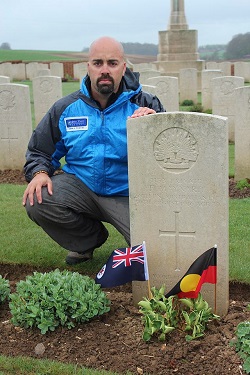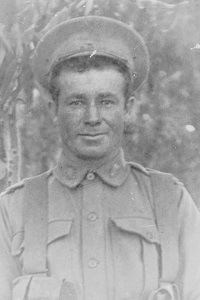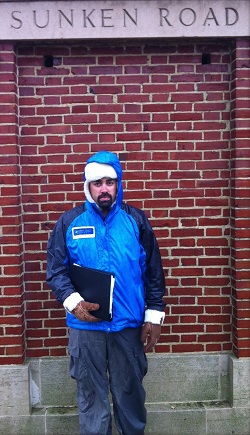
Communities, Sport and Recreation
-
Community Partnerships and Priorities
- Aboriginal Partnerships
- Child and Youth Wellbeing
-
Community Policy and Engagement
- Advisory groups
- Centenary of ANZAC
- Companion Card Program
- Concessions Guide
- Prevention of Family and Sexual Violence
- International Women's Day
- Frank MacDonald Memorial Prize
- Significant Tasmanian women
- Tasmanian Honour Roll of Women
- Women on Tasmanian boards and committees
- Veterans Programs
- Seniors Card
- Tasmanian Carer Action Plan
- Older Tasmanians
- LGBTIQA+ Tasmanians
- Volunteering
- Multicultural Tasmanians
- Food Relief to Food Resilience
- People with Disability
- Women
- Community and Disability Services
- Community Grants
- Contact
- Digital Strategy and Services
- Office of Local Government
- Office of Parliamentary Counsel
- Office of Review and Evaluation
- Office of the Secretary
- Resilience and Recovery Tasmania
- Corporate and Government Services
- Policy Division
- Service Tasmania Unit
- State Service Management Office
Contact Details
By phone
Find the number of a specific division or office to contact them directly or call Service Tasmania on 1300 135 513.
Our staff
Use the Tasmanian Government Directory to find staff contact details
Social media
Follow our social media accounts to keep up to date with specific programs and initiatives.
Private Frank Maynard


Minutes before Anthony King, of the Department and Premier and Cabinet, was about to leave Hobart to visit the battlefields of the Western Front in Europe he was given a photo of Private Frank Maynard the soldier he had researched for the Frank MacDonald Memorial Study Tour.
As a proud Aboriginal man, Anthony wanted to research an Aboriginal soldier from Tasmania; this is how he came to know Frank Maynard.
Private Frank Maynard was one of the many known Tasmanian Aboriginal soldiers to serve in World War One (WW1).
The son of Cape Barren Island ‘native’ John Maynard and Eva Chappel, Frank was one of seven children born to the pair on the Island. His brother William also served in the First World War. William went missing at Bullecourt and is still missing. His remains were never recovered from the battlefield.
Prior to enlisting Frank was a guard at the Flinders Island wireless station and also worked as a labourer.
Cape Barren Island is quite significant in Australia’s war and Aboriginal history as it had the highest enlistment rate per capita of any other town or place in Australia, with the vast majority of enlistments being Aboriginal men.
Military career
Frank enlisted with the Australian Imperial Force (AIF) on 24 April 1915, and was assigned to D Company, 26th Battalion (infantry), 7th Brigade.
His medical papers described him as having a dark complexion, black hair, brown eyes. The examiner made note of Frank’s Indian ink tattoos and sketched the series of cryptic symbols on the report, many appearing to have military connotations. Anthony found these tattoos to be a very intriguing part of his research.
“The thought that an Aboriginal man with no particular service history would have a series of military-like tattoo, including a Victoria Cross, prior to even enlisting in the AIF lends itself to multiple interpretations. Was Frank drawing on his cultural connections, considering himself as warrior heading to battle – or was Frank rather aspirational in terms of what he wanted to achieve with of front-line service?” Anthony pondered, "There is definitely a story behind them."
Frank spent time at the Enoggera internment camp in Brisbane before he received endorsement on 28 May that he was to travel to Gallipoli. He left Australia in June 1915 on the HMAT Aeneas A60, a ship weighing 10,049 tons with an average cruise speed of 25.92 kph. Before departing Australia the 26th Battalion War Diary states that it was already ’12 men short’.
After a training stint in Egypt, Frank landed in Gallipoli on 12 September 1915 where his battalion played a defensive role and was responsible for the defence of Courtney’s and Steele’s Posts, and Russell’s Top.
The 26th Battalion withdrew from the peninsula after three months and spent another period in Egypt before departing for France in March 1916. Together with the 28th Battalion, the 26th commenced the first trench raid undertaken by Australian troops on the Western Front on 6 June 1916.
The 26th Battalion went on to fight its first major battle around Pozières between 28 July and 7 August. Private Frank Maynard was killed in action near Sunken Road, Contalmaison France on 30 August 1916 at the age of 37.
A pink slip was sent to Flinders Island reading “Urgent Telegram, Private Frank Maynard, killed or wounded”. He now rests not far from where he died in the Sunken Road Cemetery, alongside over 200 soldiers from Australia and Canada.
Anthony's pilgrimage
 In
2013 Anthony set off on a pilgrimage to Contalmaison to visit Frank’s grave as
part of the Frank McDonald Memorial study tour. Contalmaison is a village in
the Somme and like so many towns in this area of France, was
subject to intense fighting during WW1. The town was actually one of the Allied
key objectives in the first Battle of the Somme.
In
2013 Anthony set off on a pilgrimage to Contalmaison to visit Frank’s grave as
part of the Frank McDonald Memorial study tour. Contalmaison is a village in
the Somme and like so many towns in this area of France, was
subject to intense fighting during WW1. The town was actually one of the Allied
key objectives in the first Battle of the Somme.
"For every one cemetery we there must have been another 25 or more just like it. It was hard to not be affected," Anthony said of the emotions experienced.
Sunken Road is part of the Contalmaison-Pozieres Road, and the cemetery where Frank lies today is a little east of the road. Constructed in July-October 1916 during the middle fighting in the Somme offensive, Sunken Road Cemetery covers an area of 1,210 square metres. It was once an old roman road and over1000 years of use caused undulating terrain, hence “Sunken Road”.
The cemetery is right off the track Anthony says, after the bus ride at least a 15 minute walk before you see the low red brick wall enclosing the graves. The amazing thing is no matter where the cemetery or memorial is, even if it is in the back of a paddock and off the beaten track they are all so beautifully cared for, Anthony said.
Sunken Road Cemetery contains the graves of 148 Canadian and 61 Australian soldiers and five men of the Royal Artillery. Those that have been laid to rest here are all fatalities of the Pozières–Mouquet Farm fighting between July and September 1916.
One of the most memorable parts of Anthony’s journey was being able to place the Aboriginal flag on Frank's grave. The Aboriginal flag was not about until 1971 and not adopted until 1995 so it was not something Frank would have known, so being able to place it with Frank was very symbolic for Anthony.
Aboriginals at that time did not have the same rights as white Australians did. Although it was illegal to enlist, many enlistment officers turned a blind eyes to many aboriginal soldiers like Frank. Aboriginals were not able to vote, were not counted in the census and on returning from the war where they were treated as equals were not able to attend RSL clubs and were persecuted for being Aboriginal.
For Anthony his research and journey to visit Frank Maynard's grave triggered more questions to be asked than answered, but he developed a strong connection to Frank that he will carry with him from now on.
"It was very moving for me to perhaps be the first Aboriginal man or anyone for that matter to purposely visit the grave of Frank Maynard. It’s something I will remember for many years to come."
